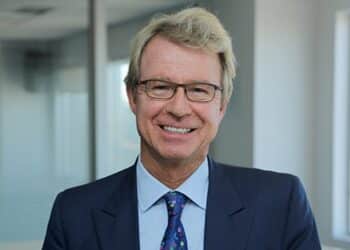While the rapid growth of exchange-traded funds (ETF) is often framed through the lens of retail investor interest, their institutional counterparts are, too, harnessing these investment vehicles.
Institutional investors are increasingly looking at active ETFs to form part of their core portfolio, said JP Morgan Asset Management’s (JPMAM) global head of ETFs, Travis Spence.
“There’s a much greater awareness from institutional investors, who used to use ETFs as a transition strategy or a very tactical strategy. That’s shifting with the advent over the last 10 years of active ETFs,” he said in conversation with InvestorDaily’s sister brand, Money Management.
For sophisticated investors seeking an active style of investment management, they can now access this through an ETF wrapper, which also offers greater liquidity.
“We’re seeing particularly the more sophisticated investors start to use ETFs and active ETFs more but for the core part of their portfolio,” Spence said.
“They get access to different types of liquidity. There’s a realisation that you can start to harness and take advantage of some of these benefits through the ETF wrapper in a way that they couldn’t before.”
More specifically, the global head of ETFs highlighted that fixed income within an active ETF structure is rapidly gaining significant traction among institutional investors.
“One of the areas that we’re seeing particular interest from institutional investors is in fixed income. So fixed income, traditionally, is an active asset class. It can be difficult to access and build a whole portfolio very easily, because you have 3 million bonds to choose from across the globe,” he said.
However, as many fixed income investments lack daily liquidity, investors are increasingly favoring active ETFs for their inherently liquid structure.
Spence continued: “ETFs offer, through the secondary market, an additional layer of liquidity [for] an institutional investor. They can access that secondary liquidity through the ETF and that starts to become an additional benefit into their portfolios.
“I think that’s going to be an area of particular growth that we see going forward.”
Further launches in the fixed income ETF space are expected, with Spence projecting the market to nearly triple in size from US$2.5 trillion to US$6 trillion by 2030. Active fixed income ETFs could also rise to at least US$1.7 trillion over the next five years.
“We’re seeing much bigger growth in overall fixed income ETFs now; I forecast it could get from US$2.5 trillion to US$6 trillion in the next five years,” he said.
“The active fixed income ETF part of the market is about US$350 billion … and I think that will get to US$1.7–2.0 trillion in the next five years so there’s really strong demand.”
More broadly, global ETF assets are projected to double from about US$15 trillion today to roughly US$30 trillion within the next five years, JP Morgan forecasts.






